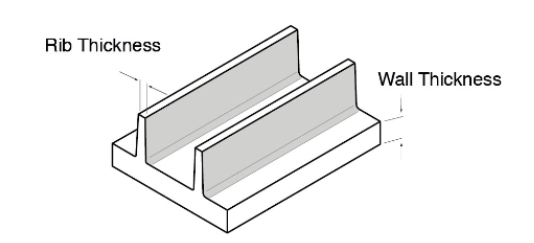The global casting polyurethane market size was USD 2345.4 million in 2022 and is expected to reach USD 3928.98 million by 2031, exhibiting a CAGR of 5.9%, shaping the future in manufacturing processes.
Urethane casting, also referred to as Vacuum casting, stands out as a crucial manufacturing process in the automotive sector, facilitating the production of plastic and rubber parts with bubble-free, smooth surface textures and zero defects. This method, utilizing a vacuum to draw liquid into silicone molds, is synonymous with polyurethane (PU) casting due to its predominant use of PU resins. Across the automotive industry, vacuum casting plays a crucial role in the production of various components such as gaskets, washers, engine mounts, bumpers, and more.

Explore our comprehensive range of services and discover how we can optimize your automotive components through urethane casting. Visit Procurabl's website (https://www.procurabl.com/industries/automotive) to learn more.
Design Considerations
Draft Angle
The draft angle is crucial in facilitating the easy removal of the plastic part from the mold without distortion or breakage. Without draft, the plastic might adhere to the mold, making removal difficult or damaging the part.

Wall thickness
The parts produced by using vacuum casting should have a minimum wall thickness of 0.040” (1 mm). In some special cases, wall thickness of 0.020” (0.5 mm) can be achieved for producing small components. Larger parts generally require thicker walls in order to ensure the structural integrity of the product.
Tolerance
The amount of tolerance usually depends on the process. In certain processes, tighter tolerances are allowed depending on the intricacy of the part. For vacuum casting, part design should follow a tolerance of +/- 0.25mm (0.010in) or +/- 0.5% of the master dimensions, whichever is greater. The 0.25 mm tolerance is the minimum for vacuum casting, and that will only increase as your part gets larger.
Shrinkage allowance
Shrinkage should be addressed before starting the manufacturing process. It's normal to expect at least 0.15% shrinkage. This is caused by the thermal expansion of the vacuum casting material and how the flexible silicone mold warms in response.
Utilizing Urethane When to use Vacuum casting?
Vacuum casting offers distinct advantages when compared to other manufacturing processes like injection molding etc. One can choose to use vacuum casting in cases like small batch size, complex designs or rapid prototyping.
Low investment costs & effectiveness: Vacuum casting is an economical alternative to traditional manufacturing methods such as injection molding, particularly for low to medium production runs.
Rapid prototyping and Short manufacturing runs: Vacuum casting is the perfect solution for rapid prototyping and short-run manufacturing at a low cost. The molds can be made inexpensively and are made in great detail, requiring very little post-production for prototypes. Each mold can print about 25-30 sheets and can be produced quickly. The time for printing each part depends on the complexity, curing time and setup time of the process.
Precision Replication of Intricate Details: Vacuum casting excels at reproducing complex and intricate geometries. It can replicate fine details and undercuts in molds that are challenging for other manufacturing processes.
Why should you use vacuum casting in Electric vehicles?
In today’s world, many electric vehicle manufacturers are turning to polyurethane to enhance driver experience and vehicle performance. This strategic adoption of polyurethane provides a clear advantage to EV manufacturers as it reduces weight, vibrations and is much cheaper compared to conventional steel materials.
Following are some of the key factors of using vacuum casting in the EV sector
Sustainable Solutions for Interior Components: Modern vehicles now integrate approximately 74 pounds of polyurethane, constituting around 18.5% of their total weight. This substantial presence underscores the industry's focus on enhancing fuel efficiency in traditional vehicles and embracing lightweighting strategies. Manufacturers are constantly innovating, incorporating polyurethane into interior components to meet evolving demands for efficiency and performance.
Decreasing Noise Levels: Polyurethane is emerging as a key component used in muffler systems, which enhances the passenger comfort by reducing noise levels. Mufflers lined with polyurethane offer superior durability, sustaining in harsh environmental conditions better than traditional rubber alternatives.
Vacuum casting is essential for manufacturing of vehicle components such as bushings, gaskets, washers, springs, engine mounts, liners, and rollers. Notably, shock absorber bushings stand out as a testament to its utility. By harnessing the benefits of vacuum casting and polyurethane materials, manufacturers can drive innovation, enhance performance, and usher in a new era of sustainable mobility.
Take the next step towards revolutionizing your manufacturing processes with Procurabl's expertise in urethane casting https://www.procurabl.com/capabilities and innovative solutions.
Contact us today to explore how we can support your journey towards manufacturing excellence.

Amisha Agarwal
May 20, 2024



